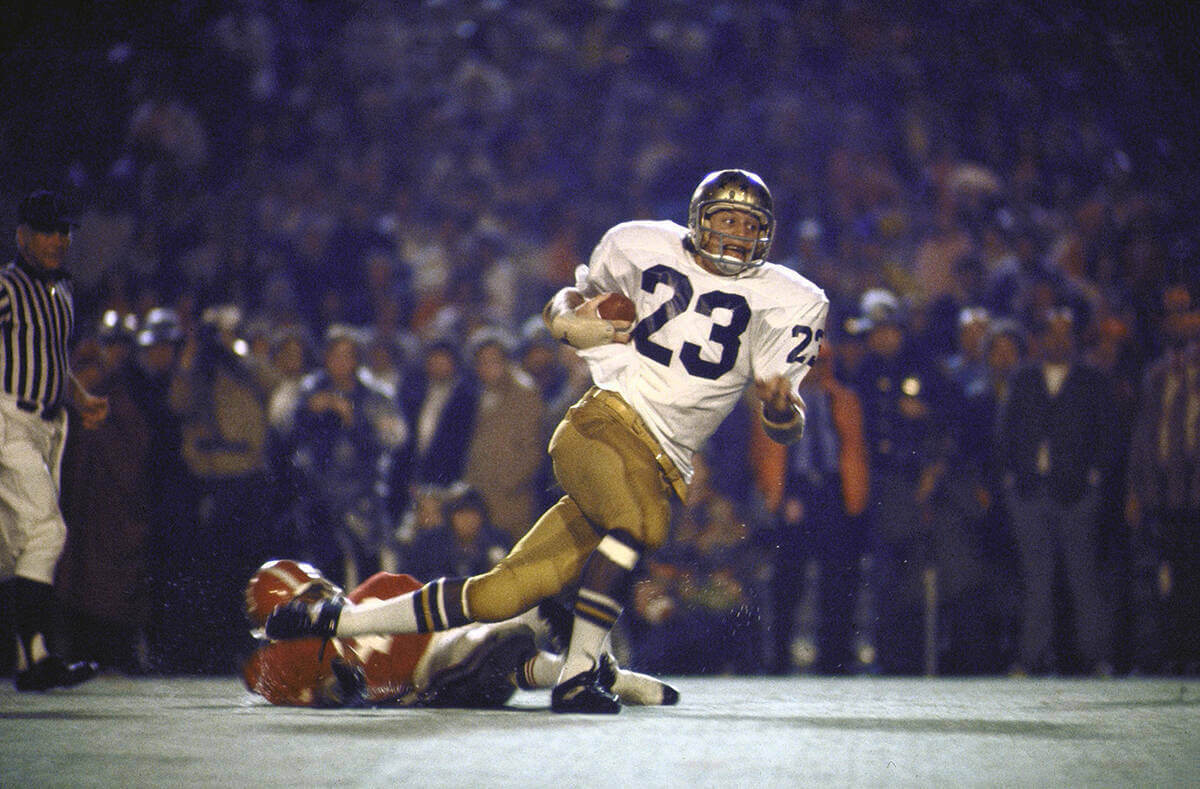My introduction to Notre Dame football came as I sat by my father’s side watching games and replays every fall weekend. Growing up Irish Catholic in New Orleans, I dreamed of playing college football in South Bend.
When an Irish alum asked my high school coach to send my game films to Notre Dame, I thought I had died and gone to heaven. Shortly thereafter I received a letter from coach Ara Parseghian. He penned this missive with great rhetorical skill, making me feel thankful for his correspondence while suggesting I find educational opportunities elsewhere. Apparently, he had all the short, slow linemen he needed that year.
It turned out to be in the best interest of my family that I signed to play for Tulane University, becoming the oldest of four brothers who would play for the school within walking distance of our home. I don’t think our parents would have had the time or money to go to Notre Dame games with a family of eight boys and four girls.
I was Tulane’s starting left offensive tackle in a 1971 game at Notre Dame, where I had the pleasure of having my helmet broken in two, courtesy of a large, angry defensive end named Fred Swenson. A couple years later, I helped equip the Fighting Irish for the classic 1973 Sugar Bowl against Alabama.
After graduating, I worked in Tulane’s development office. I had the honor of meeting Ara and his assistant Tom Pagna at a coaching convention where I was selling a weight machine a Tulane coach had developed.
One day, not long before the 1973 Sugar Bowl that would be played at Tulane Stadium, I got a call from Pagna. He had heard through the grapevine that the Tulane head coach had sent Alabama’s Bear Bryant 60 pairs of specialized cleats designed to be used on the artificial turf field. Tulane’s coach, Pagna told me, had assured him that cleats would be available for Notre Dame, too, after the Green Wave returned from the Astro-Bluebonnet Bowl in Houston.
But Pagna, the ever-meticulous assistant, had consulted the calendar and realized that Tulane would not return to New Orleans in time to provide cleats to Notre Dame. This was his plight. I said I would do anything I could to help the Fighting Irish.

I found a forlorn assistant equipment manager who was a little miffed that Tulane had not taken him on the bowl trip. I said, “Clarence, I need every pair of cleats you have back there, and I need them quickly.”
His response was, “Foley, you only got two feet; why you need all those shoes?”
I explained the situation and he agreed it was not right to favor one team. I walked away with three large duffel bags containing 45 pairs of cleats. I met the Notre Dame buses under the stadium and suggested to Parseghian and Pagna that they give the cleats to faster skilled players: running backs and wide receivers, linebackers and defensive backs.
I also divulged a little inside information about the decided east-to-west tilt of the grain on Tulane’s field. Like a carpet or a putting surface, wet turf gets slippery in the direction the artificial blades bend, so if it rained it would be critical to run plays against the grain.
Game time arrived on a damp night in New Orleans, and as I sat in the stands with my brother-in-law, Jimmy Holmes ’63, I told him about the shenanigans before the game. Lo and behold, it started raining. I said, “Now watch this; they are going to run everything from west to east.”
I don’t know if it was Notre Dame’s “against the grain” playcalling, the shoe caper or the determination of the Fighting Irish, but they defeated Alabama 24-23 and won the national title.
Credit the shoe-leather diligence of Parseghian and Pagna.
Rob Foley returned to Notre Dame Stadium last May to watch his eighth daughter, Maddie Foley ’21, become the first of his children to graduate from the University.